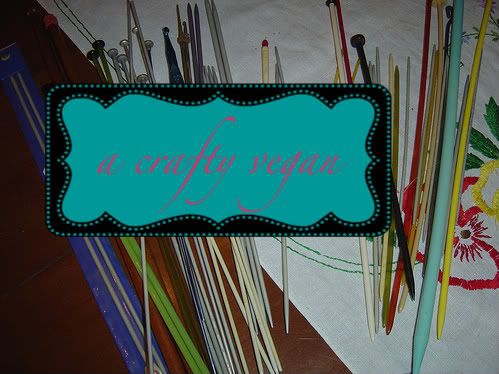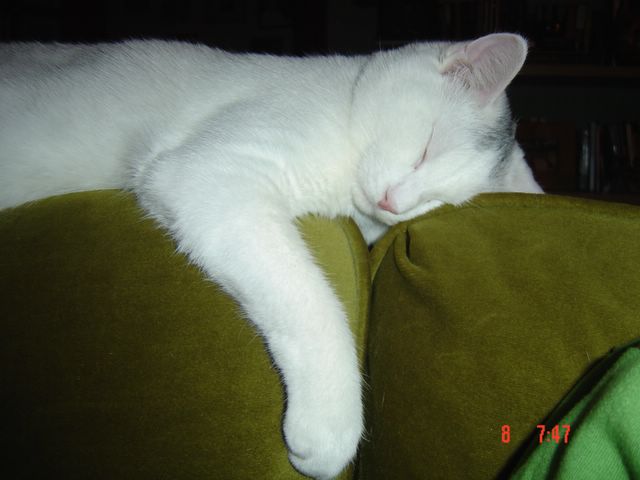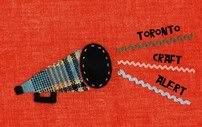A Brighter Shade of Light

I have been working steadily on making changes and renos to my new pad, and one task that i did pretty early on, and possibly was just a bit too eager to do, was to update the light switch plate on the second floor. It's a switch plate for three lights, so instead of trying to find a new one, i decided to simply recover it this way.
Since i'm not into folk art, every time i either walked by or had to use the lights, my heart just sighed. Until i found a perfect solution, i knew i just had to wait it out.
Then, as we had found the greatest wallpaper to do as a feature strip in our dining room, the print jumped out at me for the plate.
The photo on the left is the BEFORE, the only good thing for me was the solid ceramic instead of flimsy plastic. And the photo on the right is the new plate. I simply traced the shape and size of the plate, and used good wallpaper adhesive to put it together. Nice and easy!







7 Comments:
I like the new plate look better as well. Very nice paper!
Hi there - The light switch plate looks a hundred times better now that you covered it up. Good work!
I must add though that looking at your approach to decorating, I would think that 'folk art' is very much your style. I mean, quilting and patchwork pillows and curtains, and vintage flowery fabrics, are all reminiscent of folk art.
Folk art is generally produced by people who have little or no academic artistic training, nor a desire to emulate "fine art", and use established techniques and styles of a particular region or culture, for example a style such as midwestern U.S. or cottage country.
There are so many interesting ways to use fabrics! (your memory game cards are so clever!) It makes me think in investing in a better sewing machine. Using vintage floral fabric is also known as shabby chic - not folk art. I've seen funky, modern quilts at fine art museums that do NOT look like grandma's. It also happens to be an 'academic' technique. And yes, your definition copied verbatim without reference from Wikipedia is correct - i think 'V' neglected to specifically identify her light switch cover as German folk art. There is a difference between craft and fine art, but many artists like to blur the line inbetween and create (or re-create) something unique and original.
Wow~ That's such a neat Idea!
I am going to try that.
Thanks!
-Julie
Ahem, it is very honourable of you to jump in defend your blog pal. I’m sure that she appreciates it.
Judging from your defensive stance and your comments, you clearly are offended at the connection I made between ‘folk art’ and with the craftwork displayed on this blog. If you know anything about the Arts and Crafts movement and art history, you would not have attempted to overly analyze what I wrote. Perhaps next time, your blog pal should get someone more knowledgeable about art history to defend her and not a scientist. (Isn’t the internet great?)
For your information, “a crafty vegan” did in fact state on one particular post (July 2006) that she was making a wedding quilt to pay homage to her partner’s Germanic Mennonite roots…so clearly there is a deliberate influence of German folk art in this person’s craft work.
Just because ‘folk art’ might not be considered posh or trendy right now, you instantly interpreted my comment as an insult. It wasn’t an insult. Quilts ARE made by “grandmas” AND also by professional quilt makers. Quilts are usually displayed in folk art museums. Occasionally, some very outstanding and unique quilts may also be displayed in an art gallery. This is especially true if there is a message behind the quilt pattern - like a message about AIDS or feminism. Not all quilts are considered to be artistic; some are purely functional. This ‘art versus craft’ distinction can often be quite controversial. Many times it is a personal opinion in the eye of the viewer.
Furthermore, the term “shabby chic” is a term you will never find in academic art books…it is a coined termed made by an aspiring home decorator (Rachel Ashwell) trying to market the style to would-be consumers via her decorating books…basically to sell books. You can also find “shabby chic” inspired home accessories at Target which would indicate that the look has become quite mainstream since the 1980s when it was first introduced.
What would have made more sense would be for “a crafty vegan” to state that “although she does not like images of houses and hearts on her light switch plates because she finds it too folksy, she does in fact enjoy other forms of folksy inspired crafts like patchwork quilting, crocheted doilies, and making pillows.
Being acquainted with many artists (and being one myself), I have come to know that artists do not appreciate the connection made between their artwork and that of a crafters work. Artists do not like to ‘blur the lines.’ That is a misconception. It is the average viewer that prefers to blur the lines because they don’t have a solid understanding of what constitutes art.
Once again, this is a deeply controversial subject and one that has been debated about in essays and books on numerous occasions. I don’t see this topic being resolved anytime soon.
nice! all my rooms have colourful switchplates, it's a quick, cheap way to brighten things up!
What a good idea - I love the print on the switchplate!
Post a Comment
<< Home